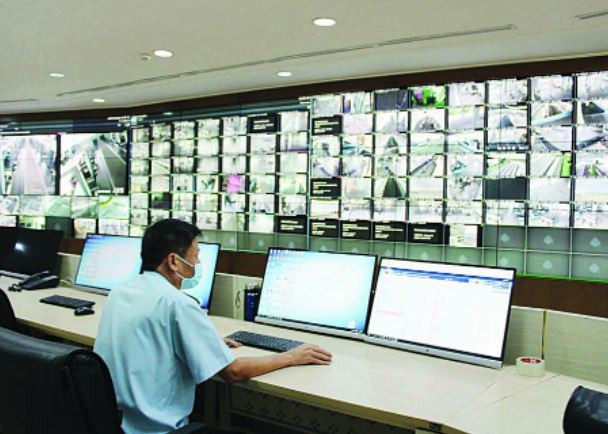Completing the construction of a smart customs model by 2030
The Customs sector’s digital transformation plan focuses on building digital technology applications, digital data and technology solutions to adjust institutions, redesign business processes, and innovate state management activities. on customs, serving people and businesses, reducing costs… By 2030, strive to complete the construction of smart customs.
The General Department of Customs will promote digital transformation in customs operations in a comprehensive and synchronous manner when implementing the National Single Window and the ASEAN Single Window to complete the goal of 100% of customs procedures. done entirely on the network (paperless) environment. In which, 100% of customs procedures are digitized and carried out electronically; 95% of documents in customs dossiers are converted into digital data; 100% of basic customs control records are converted to electronic data, moving towards digitization.
 |
| The Customs sector aims to build a smart model. (Artwork: Haiquanonline) |
Striving to 2025, completing Digital Customs, in which comprehensive digital transformation in the state management of customs is implemented with an IT system with a high degree of integration, openness, and conformity with standards. international standards, comprehensively meeting the needs of automatic processing of all business stages.
To accomplish the above objectives, the customs IT infrastructure is also set to modernize.
Accordingly, the General Department of Customs will complete the IT hardware architecture according to the cloud computing model and invest in, replace and synchronously upgrade IT equipment for units to meet the requirements of software deployment. core application, in line with the architecture of the Government of the Finance sector and the Architecture of the Government of the Customs sector.
Upgrading and expanding the technical infrastructure of the Data Center of the General Department of Customs according to Tier 3 standards to ensure readiness for deployment and operation of 24/7 security and safety Customs IT systems.
Invest in upgrading, replacing equipment, and expanding the bandwidth of the customs network system in accordance with the architecture, the roadmap for deploying the unified communication infrastructure of the financial sector and the plan for digital transformation of the customs sector.
Invest in equipping and connecting, integrating supporting equipment and tools for customs management and supervision such as cameras, scanners, electronic scales, positioning seals… with a responsive IT system meet the requirements of modernization and management throughout from the beginning to the end.
Completing the design, planning, implementation and supervision of information security for the information systems of the customs sector according to the level of compliance with the Law on Information Security, the Law on Cybersecurity and other regulations. regulations and industry regulations related to information safety and security.
The smart customs management model is focused on building according to international trends and standards to ensure the application of technological achievements of Industry 4.0 (such as: Al, Big Data, Blockchain, IoT, etc.) ..).
The smart customs model ensures the connection of all professional stages in the customs procedure process to ensure transparency, integrated data from the time the goods arrive at the border gate during storage at the warehouse, yard, or port. until customs clearance, removal from the monitoring area, production or use for the right purposes registered with the customs authority. Professional operations are fully automated such as: analysis of key information, identification of risks, inspection of customs documents, records of means of transport, classification of inspection flows, customs clearance decisions, inspection. determine the payable tax amount, manage and monitor the use of raw materials and supplies in the production and processing process… This is determined as the core business requirement of the system.
This model will apply new technologies such as IoT, AI, Bigdata, Blockchain to serve the exchange and sharing of information, data management, automatic data analysis, image and global management. supply chain set.
In the period of 2021-2025, the customs sector will focus on the three biggest tasks in digital transformation: Accelerating digital transformation in customs operations by hiring IT services; Promote digital transformation in the implementation of the National Single Window and the ASEAN Single Window with the development of a centralized processing-oriented IT system. Next is the digital transformation for import and export enterprises and the digital transformation in the internal management.
Duy Vu

The General Department of Customs stated 8 tasks to successfully build digital customs
In 2022, the customs industry will focus on synchronously implementing solutions towards the goal of paperless customs and successfully building digital and smart customs in the following years.
at Blogtuan.info – Source: vietnamnet.vn – Read the original article here